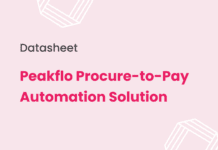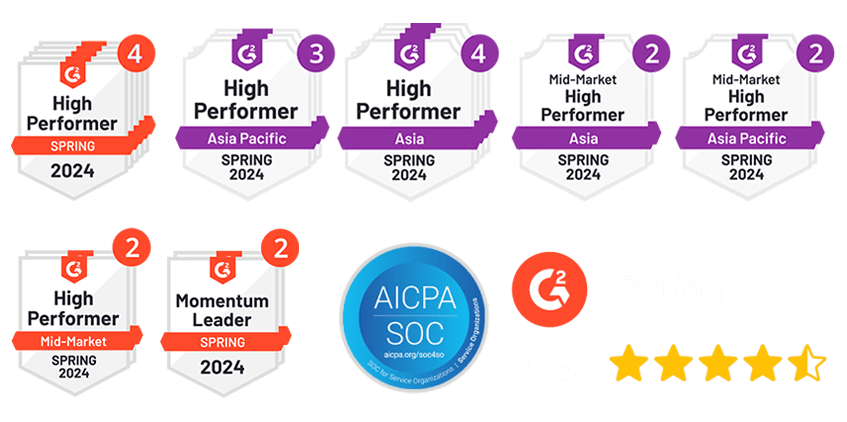Manufacturing operations face mounting pressure to stay competitive while managing complex supply chains and rising operational costs. Equipment downtime, quality control challenges, and supply chain disruptions can significantly impact your bottom line and customer satisfaction.
According to Gartner, 33% of enterprise software applications will incorporate agentic AI by 2028, a substantial increase from less than 1% in 2024. This shift reflects how manufacturers are recognizing the practical value of intelligent systems for solving real operational challenges.
The COVID-19 pandemic highlighted these vulnerabilities when 75% of companies reported supply chain disruptions that caused increased expenses and delays. As a result, manufacturers have been adopting AI-driven solutions to build more resilient operations. Currently, 44% of industrial companies view artificial intelligence as essential for competitive advantage, with early adopters reporting up to 14% cost savings through strategic AI implementation.
AI applications in manufacturing extend well beyond simple cost reduction. Manufacturers using AI agents are seeing measurable improvements across their operations, with AI-driven quality systems achieving defect reductions of up to 50%. Additionally, AI-embedded operations help reduce inventories by up to 30%, logistics costs by up to 20%, and procurement spend by up to 15%.
This represents a significant advancement in manufacturing technology, moving beyond basic assistance and recommendation systems to enable self-controlling operations. Throughout this article, we’ll examine how agentic AI is reshaping engineering and production management, quality control, and inventory optimization, helping manufacturers operate more effectively in increasingly complex environments.
Current AI Trends Reshaping Manufacturing Operations
Modern manufacturing facilities are adopting AI technologies that go far beyond traditional automation. These intelligent systems are creating new possibilities for production efficiency, quality control, and operational management.
What is Agentic AI and How Does it Work?
Agentic AI represents autonomous systems capable of making strategic decisions and solving problems without human intervention. Unlike basic automation that follows predetermined rules, these AI agents can proactively identify issues before they occur and implement solutions independently.
Approximately half of industry leaders have expressed interest in pursuing agentic AI (52%) and multi-agent systems (45%). These systems address workforce shortages while maintaining operational excellence. Smart factories now deploy AI agents that monitor inventory levels, identify machine issues, automatically place orders, negotiate with suppliers, and reroute workflows to maintain production continuity.
AI, Robotics, and IoT Integration
The convergence of AI, robotics, and IoT—commonly referred to as AIoT—creates intelligent manufacturing environments that transform raw data into actionable insights. This integration delivers:
- Autonomous operations where AI-powered IoT systems automate decision-making
- Real-time analytics from edge to cloud, optimizing resources and processes
- Enhanced collaboration between humans and machines, with robots handling dangerous or repetitive tasks
Early industrial AI adopters are achieving up to 14% cost savings through implementation. Autonomous robots have become increasingly sophisticated, requiring less supervision while working alongside humans with more consistent quality and productivity.
From Reactive Problem-Solving to Proactive Prevention
Manufacturing operations are shifting from reactive problem-solving to proactive prevention through AI-driven intelligence. This evolution represents a crucial strategic advancement for modern enterprises.
AI technologies enable manufacturers to anticipate disruptions before they occur by analyzing patterns in production data, incident reports, and customer feedback. Predictive maintenance systems process vibration, thermal imaging, and oil analysis data to forecast equipment failures. Machine learning algorithms examine historical build data and specifications to identify potential defects early in the manufacturing process, significantly reducing costly rework.
Key AI Applications Transforming Manufacturing Operations
Manufacturing teams are deploying AI solutions to address specific operational challenges while capturing measurable value across their facilities. These applications represent the most impactful ways AI is changing how factories operate today.
Predictive Maintenance for Equipment Reliability
Factory equipment downtime costs manufacturers between 5% and 20% of their capacity. This represents millions in lost revenue and disrupted production schedules that can cascade through entire supply chains.
AI-powered predictive maintenance addresses this challenge by analyzing sensor data from machinery to forecast failures before they occur. The results are substantial: manufacturers report downtime reductions of up to 15% and cost savings in the millions, with some companies identifying maintenance needs two weeks in advance.
The approach works by monitoring vibration patterns, temperature fluctuations, and operational data to detect early warning signs. This proactive strategy extends machinery lifespan by 20-40% while improving worker safety by preventing dangerous equipment failures.
Quality Control Through AI-Powered Inspection
Traditional quality control methods struggle to keep pace with modern production speeds and complexity. AI-driven quality inspection systems solve this by analyzing thousands of images per minute to identify defects invisible to the human eye.
These systems detect product flaws with up to 10x greater accuracy than traditional methods, significantly reducing defect rates and minimizing waste. Manufacturing teams in automotive plants use AI vision systems to identify issues ranging from paint imperfections to welding defects, contributing to measurable improvements in overall product quality.
The technology processes visual data in real-time, flagging potential issues immediately rather than discovering problems after production completion.
Supply Chain Optimization with Real-Time Intelligence
Supply chain disruptions can halt production and impact customer deliveries. Early adopters of AI-enabled supply chain management have achieved impressive results: 15% reduction in logistics costs, 35% improvement in inventory levels, and 65% enhancement in service levels.
AI systems provide visibility across supply networks by analyzing supplier performance data and detecting potential disruptions before they impact production. When issues arise, real-time monitoring and analytics enable faster decision-making, allowing manufacturers to adjust sourcing, reroute shipments, or modify production schedules proactively.
Production Planning and Resource Allocation
Manufacturing schedules involve complex interactions between machine availability, worker skills, order priorities, and production constraints. AI systems optimize these schedules by processing all variables simultaneously, creating balanced workloads that minimize downtime and improve overall efficiency.
Semiconductor manufacturers using AI-powered resource allocation have achieved 45% reductions in unplanned downtime and 25% increases in equipment effectiveness. The systems continuously adjust schedules based on real-time conditions, ensuring optimal resource utilization.
Energy Management and Cost Reduction
Manufacturing facilities consume 36% of global electricity, creating significant opportunities for AI-driven optimization. Energy costs represent a substantial portion of manufacturing expenses, making efficiency improvements directly impact profitability.
Predictive AI systems reduce energy consumption by up to 30% in industrial plants, often translating to millions in annual savings. Semiconductor plants have achieved 10,000 tons of CO2 reduction yearly through AI energy management, simultaneously cutting costs and environmental impact.
These systems analyze energy usage patterns, production schedules, and equipment performance to optimize power consumption without compromising production quality or throughput.
Business Value of AI Agents in Manufacturing
Understanding the practical benefits of AI implementation helps manufacturing leaders make informed decisions about technology investments. The global AI in manufacturing market is expected to grow from $3.20 billion in 2023 to $20.80 billion by 2028, reflecting the substantial value these systems provide to industrial operations.
Enhanced agility and responsiveness
AI agents enable manufacturing operations to respond quickly to changing market conditions and customer demands. These systems continuously monitor data from suppliers, logistics networks, and demand forecasts to identify potential risks and recommend alternative approaches. Manufacturing teams can produce higher-quality products faster while reducing waste, creating both cost advantages and sustainability benefits.
Cost savings through automation and optimization
The financial impact of AI implementation extends across multiple operational areas. AI-driven automation reduces operational costs by up to 30% while increasing productivity by 20-25%. Energy optimization systems have achieved a 20% reduction in emissions, providing both environmental and cost benefits for manufacturing facilities.
AI-embedded operations help manufacturers achieve:
- Inventory reductions of up to 30%
- Logistics cost decreases of up to 20%
- Procurement spend reductions of up to 15%
Scalability and adaptability across operations
AI systems grow alongside your business, primarily through integration with IoT devices and smart sensors. During periods of operational expansion or transition, AI continues to analyze production aspects and provide actionable recommendations. This adaptability ensures that technology investments remain valuable as business needs evolve.
Improved collaboration between humans and machines
AI technology enhances human capabilities rather than replacing workers entirely. Automation serves as a tool that assists, guides, and supports employees to make their work more efficient. This collaboration creates safer workplace environments by automating dangerous tasks while providing opportunities for worker upskilling and improved job satisfaction.
How to Prepare Your Manufacturing Operations for AI Implementation
Implementing AI in manufacturing operations requires careful planning and strategic execution. Many companies struggle with where to begin or how to build the necessary capabilities for successful AI adoption.
Building Internal AI Capabilities and Teams
AI implementation success depends heavily on having the right people and processes in place. Manufacturing organizations face the challenge of developing AI expertise while maintaining current operations.
Here are key strategies for building internal capabilities:
1. Recruit specialized AI talent with manufacturing experience
Look for candidates who understand both AI technologies and manufacturing processes. These professionals can bridge the gap between technical possibilities and operational realities.
2. Provide comprehensive training programs for existing employees
Your current workforce already understands your operations. Training them in AI concepts helps them develop new competencies while maintaining institutional knowledge.
3. Create cross-functional knowledge transfer mechanisms
Establish internal capability centers that ensure AI expertise flows throughout the organization. This prevents knowledge silos and promotes collaboration between departments.
4. Identify internal champions for change
Millennials, already familiar with AI and often in managerial roles, can serve as powerful advocates for organizational transformation. These employees can help drive adoption and address resistance to change.
Starting with High-Impact Pilot Projects
Pilot programs offer a structured approach to AI implementation while minimizing risk and demonstrating value quickly.
Focus on these essential elements:
Select narrowly scoped, high-potential use cases that offer clear operational improvement. Choose projects where success can be measured easily and results are visible to stakeholders.
Establish rigorous performance measurement protocols with actionable metrics. Define what success looks like before implementation begins, and track progress against specific benchmarks.
Create iterative feedback mechanisms to refine solutions based on outcomes. Regular review sessions help identify what’s working and what needs adjustment.
Ensuring Continuous Learning and System Refinement
AI systems require ongoing attention to maintain effectiveness as your operations evolve and data changes.
Monitor system performance regularly
Continuous learning enables AI systems to adapt incrementally as data evolves. Implementing monitoring tools that track model performance metrics helps detect when retraining becomes necessary.
Collect and analyze user feedback
Regular collection and analysis of user feedback helps companies understand practical usability and satisfaction levels. This information is crucial for making improvements that actually benefit daily operations.
Plan for system updates and improvements
AI systems improve over time, but only with proper maintenance and refinement. Schedule regular reviews to assess performance and identify optimization opportunities.
Partnering with AI Solution Providers
Finding the right technology partner can accelerate your AI implementation while reducing internal resource strain.
Look for deep manufacturing experience—not just AI expertise—when selecting partners. Understanding your industry’s specific challenges is just as important as technical capabilities.
Choose embedded collaboration models where partners work alongside your internal teams. This approach builds internal capabilities while delivering results, gradually reducing dependency on external resources.
Establish clear expectations and milestones with your technology partners. Define deliverables, timelines, and success metrics to ensure alignment throughout the implementation process.
How Peakflo’s Agentic Workflow Empowers Manufacturing Finance Teams
While production optimization often takes the spotlight, finance and procurement functions within manufacturing operations are equally crucial—and equally primed for transformation through AI. That’s where Peakflo’s Agentic Workflow steps in.
Peakflo Agentic Workflow is designed to automate and streamline finance back-office operations, allowing lean teams to do more with less. Whether it’s processing purchase orders, matching invoices, or reconciling vendor payments, Peakflo’s AI agents don’t just assist—they act autonomously based on predefined rules and real-time data.
Here’s how manufacturing companies benefit:
- Touchless PO and Invoice Matching: No more chasing paper trails or manually verifying vendor data—Peakflo’s AI agents handle it end-to-end with 95%+ accuracy.
- Reduction in Processing Time and Errors: Automating invoice approvals and payment workflows significantly reduces turnaround time and minimizes costly errors.
- Real-Time Visibility into Spend: With centralized dashboards and proactive alerts, finance teams can track budget deviations, cash flow risks, and compliance metrics instantly.
- Improved Supplier Collaboration: Integrated vendor portals and automated reminders mean fewer follow-ups and faster resolutions.
- Zero-Touch Payments: AI agents automatically execute payments based on approval conditions, enabling finance teams to focus on strategic planning instead of manual transactions.
Peakflo’s Agentic Workflow bridges the gap between finance and operations, enabling your back-office to scale as efficiently as your factory floor. Talk to our expert and start your journey with Peakflo Agentic Workflow today.
A Way Forward
Understanding AI applications in manufacturing and knowing how to implement them effectively is crucial for maintaining competitive operations and ensuring long-term business success. The evidence shows clear benefits – from significant defect reductions to substantial cost savings across inventory, logistics, and procurement processes.
The manufacturers who build resilient operations will be those who view AI agents as essential tools for solving real business challenges. This means starting with focused applications, building internal capabilities, and gradually expanding AI use across operations as teams gain experience and confidence with the technology.
Try evaluating your current operational pain points and identifying where AI could deliver the most immediate value. This practical approach helps ensure that AI investments align with business objectives and deliver measurable returns on your technology investments.
FAQs
Q1. What are the main benefits of implementing AI in manufacturing?
AI in manufacturing offers numerous benefits, including enhanced operational efficiency, cost savings through automation and optimization, improved product quality, and increased agility in responding to market changes. It can reduce downtime, optimize resource allocation, and enable proactive maintenance, leading to significant improvements in overall productivity and competitiveness.
Q2. How are AI agents transforming production planning in manufacturing?
AI agents are revolutionizing production planning by analyzing machine availability, worker skills, order priorities, and production constraints to create optimized schedules. This balanced approach minimizes downtime, improves efficiency, and enables manufacturers to adapt quickly to changes in demand or supply chain disruptions.
Q3. What role does AI play in quality control for manufacturing?
AI-driven quality inspection systems can analyze thousands of images per minute to identify defects that may be invisible to the human eye. These systems can detect product flaws with up to 10 times greater accuracy than traditional methods, significantly reducing defect rates and minimizing waste in the manufacturing process.
Q4. How does AI contribute to energy optimization in manufacturing facilities?
AI systems in manufacturing can reduce energy consumption by up to 30% in industrial plants by analyzing patterns in energy usage and optimizing operations accordingly. This not only leads to substantial cost savings but also contributes to reducing the environmental impact of manufacturing processes.
Q5. What steps should manufacturers take to prepare for AI implementation?
To prepare for AI implementation, manufacturers should focus on building internal AI capabilities and teams, start with high-impact pilot projects, ensure continuous learning and system refinement, and consider partnering with experienced AI solution providers. It’s crucial to develop a strategic approach that includes talent development, careful project selection, and ongoing performance evaluation.









![Why AI Sales Calls Are Making Good Sales Reps Even Better [2025 Guide] ai sales calls](https://cdn-kmjmp.nitrocdn.com/YvtqmrsiHUxqerlSiZgbfzqqTARWTElr/assets/images/optimized/rev-834053b/blog.peakflo.co/wp-content/uploads/2025/09/65168cf6-3001-4733-8cbc-12d5684cf449-218x150.webp)

































